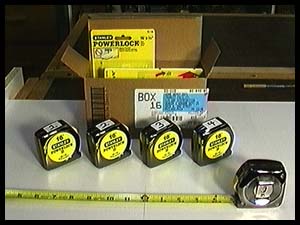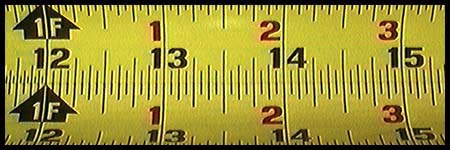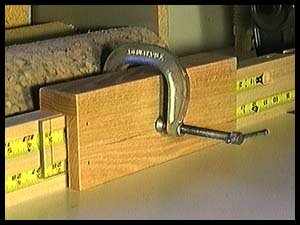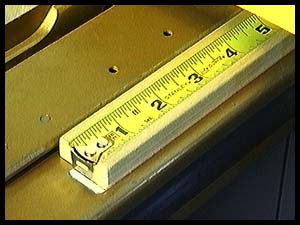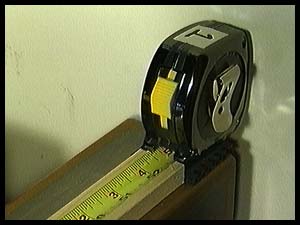

Measuring Strategies
Part II: by Jim
Mattson
The Hypothesis
Those of you who stopped by for the first installment of this article no doubt remember the perplexity I experienced in trying to find an accurate tape measure. (Those of you who didn't see that part need to read it first or you'll understand squat about what I'm writing here in part II :-)
After looking at many tapes from several different manufacturers and getting a wide variation in comparison I decided to try a new approach. It seemed to me that 'maybe' it might be possible to find accurately matching tapes if they came from the same manufacturer and were likely made at the same time on the same machine.
To answer this question meant a trip back to Home Depot. Instead of taking tape measures off the display rack, I was looking for a carton - an unopened manufacturer's box of tape measures. It seemed plausible if there were any way to find some tape measures which compared alike, this was the best way to go.
In the store that many people love to hate (or in my case - hate to love) my quest wasn't going to be easy. Though there seemed many boxes of tape measures, they were all stored just out of reach. I needed one of those aisle-blocking, toe-stubbing rolling staircases and unusually, there wasn't one nearby. Scanning the horizon I spotted one two aisles over in front of the portable power tools. Off I went.
Getting the staircase over to the tape measures was a bit tricky and apparently my bumping around inspired the attention of a nearby customer service representative. In the middle of fumbling through the boxes looking for acceptable test samples, she surprised me with the question, 'Can I help you find something?'
Immediately I realized how unusual this might seem for someone to be looking for a 'carton' of tapes with so many displayed within reach on the rack. I almost replied that, 'I have this website and I'm researching the possibility...', but instead decided to keep it simple, replying, 'I'm looking for some tape measures which all measure the same.'
I've had dealings with this particular salesperson before and my impression of her always indicated she was much brighter than the average, orange-aproned Home Depot employee. Her puzzled expression showed some more explanation was necessary. I went on, 'If I can get them all from the same box, I'll have a better chance they'll be alike.'
'But how different can they be?', she asked.
'As much as a 1/32"', I responded.
She digested this rather quickly and asked, 'Does that matter?'
This seemed perfectly reasonable to me given that most of the customers she deals with spend their days banging 2x4s together. Perhaps I should've started out by saying, 'I have this website...' but time is money and I needed to get going. 'I'm a professional cabinetmaker', I responded.
Again she did the extrapolations, nodded in understanding and decided perhaps the idea (or me) wasn't as crazy as it would initially appear. She drifted away.
Fearing a similar encounter with another one of her compatriots, I grabbed a box and headed for checkout. So what did I bring back to the shop? From my earlier tests it seemed the Stanley 16' Powerlock IIs were the most accurate. The following tests showed this not to be conclusive. Read on...
